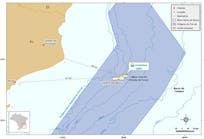ALAN PETZET
Chief Editor-Exploration
Business and personal travel often take OGJ staff to Louisiana, and this column could become a travelogue except for explicit directions from the editor to the contrary.
For anyone involved with the oil and gas industry, Louisiana is a paradise. When you mix the facilities with the energetic and genuine people, you have a pretty inviting place.
Louisiana has the distinction of being a state of survivors. The people there have learned to survive about anything: hurricanes, floods, blowouts, oil spills, corruption, casinos, moratoriums, insects, and federal maltreatment.
Now Louisiana may be heading for another distinction: It could become the only place in the US without a state geological survey.
Louisiana Geological Survey
The LGS employs 18 people and for the fiscal year ending June 30 has a $980,000 budget funded from the state appropriation to Louisiana State University.
The survey's budget will be cut 34% and possibly more in the coming fiscal year, said Chacko J. John, director and state geologist. That means layoffs and no new projects. The LGS budget is to be phased out within 3 years.
Legislatively created in 1934, LGS traces its beginnings to 1869. The legislature transferred it in 1997 to LSU from the Department of Natural Resources. Its domicile has always been at LSU in Baton Rouge.
LGS research projects, contracts and grants, and publications are of high value for exploiting the state's oil and gas, water, and mineral resources, John said.
LGS has attracted millions in external research funding to LSU during its association with the university.
Water and environmental issues
John listed a number of key LGS functions outside the oil and gas realm.
LGS faculty and staff play a critical role during hurricane emergencies and are regularly called by Governor's Office of Homeland Security and Emergency Preparedness (GOHSEP) for assistance.
During Hurricanes Katrina, Gustav, and Ike, LGS staff and equipment were at GOHSEP offices day and night and helped produce hundreds of maps sought by federal, state, security, and parish agencies for rescue and other efforts. LGS was not compensated.
LGS has been modeling freshwater aquifers. A recent incident in the Haynesville shale trend resulted in a 2-year research grant to LGS from De Soto, Caddo, and Bienville parishes to analyze water from hundreds of wells. Information provided by LGS would be critical for continued development of the Haynesville shale play, a large state revenue source.
The US Department of Energy recognizes LGS faculty as leading experts for the development of geopressured-geothermal alternate energy resources of the Gulf Coast. LGS and all state geological surveys are helping DOE in a $21 million program to establish a national data base of geothermal information.
Oil and gas
The LGS Basin Research Energy Section functions as a geological research group that assists independent oil and gas companies.
LGS is the only research institution doing geological mapping in a program funded by the US Geological Survey.
LGS first researched and published an estimate of 7 billion bbl of recoverable oil for the Tuscaloosa marine shale play in the Florida Parishes, a work that remains the only recognized publication on the topic (see map, OGJ, Dec. 29, 1997, p. 91). Like the Haynesville play, the TMS has the potential to create hundreds of jobs.
The LGS Resource Center, with more than 60,000 well logs and 30,000 ft of drill cores, is unique and an integral part of the legislatively created Louisiana Museum of Natural History. It is used by the Geology Department to train students and by industry for exploration and development purposes.
LGS has a longstanding contract with DNR and the Corps of Engineers called "Geologic Review" to examine oil and gas well drilling permits. John noted that it is the only program of its kind in the US and has been highly successful in reducing drilling impacts in coastal wetlands.
More Oil & Gas Journal Current Issue Articles
More Oil & Gas Journal Archives Issue Articles
View Oil and Gas Articles on PennEnergy.com
